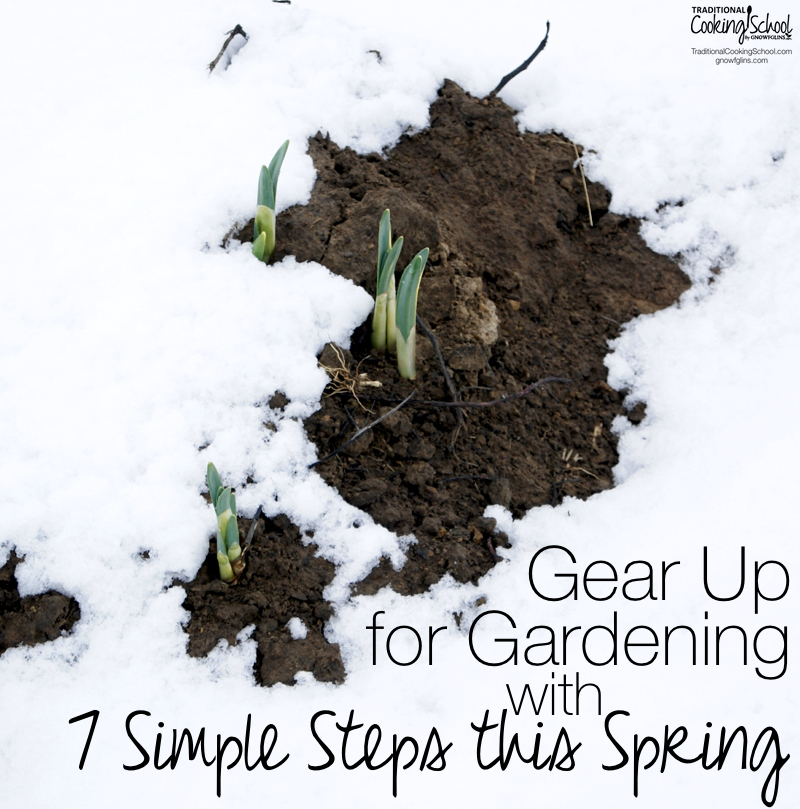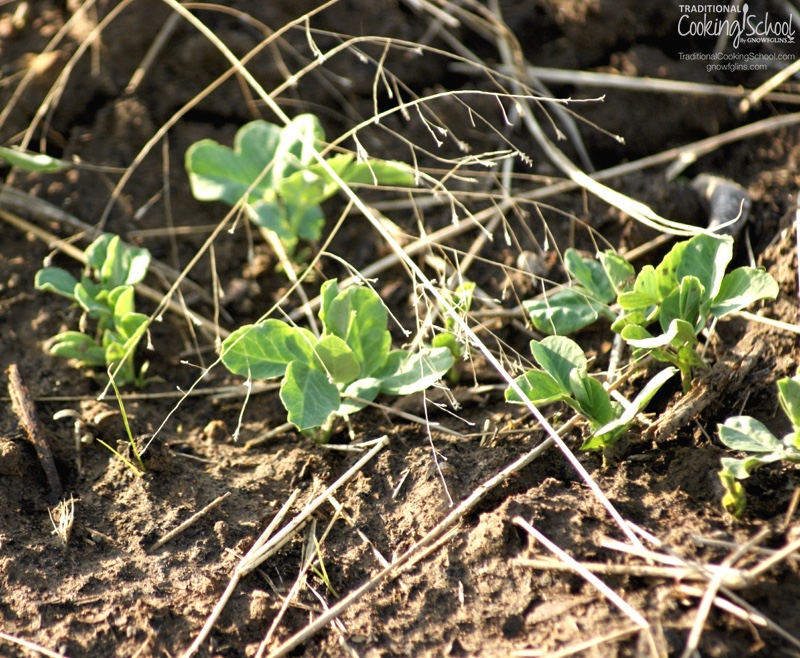
The weather may still be freezing cold — and your garden may yet be under a blanket of heavy snow — but there are a number of things you can do to prepare for the coming growing season.
Because — when it does arrive, you will most likely find yourself working at a fast and furious pace!
Do these 7 simple steps right now and you’ll be prepared (and perhaps a little ahead) when things finally warm up. 🙂
1. Get your planting dates on the calendar.
Get out your wall calendar, virtual spreadsheet, or whatever you use that is handy and comfortable for you. Before you plant a single seed, sit down, decide what you want to grow this year, and mark the planting dates on your calendar.
If you are like me, you’ll be tempted to think this task is unnecessary. But once spring season is in full swing, other chores such as thinning and weeding will leave little time to think of anything else. You don’t want to miss that window of opportunity for starting your runner beans!
Here’s a free resource from our friends at Seeds for Generations — the FREE Garden Planning Calculator.
If you are unsure what should go in and when, contact your county extension office. They can help you, plus offer advice on the best varieties for your area.
More info:
- FREE Garden Planning Calculator
- Our Experience with Companion Planting
- Vegetable Families and Crop Rotation
- 6 Tips for How to Plant and Grow Beans
- What to Plant Now to Be Ready for Cold and Flu Season Later
- Keys to Success for the Beginning Gardener
- All our Gardening Articles here at Traditional Cooking School
2. If you haven’t already, order seeds and transplants. And don’t forget things like seed potatoes!
Take inventory of your current seed supply. Check to make sure you have enough of everything you need. Now is the time to order more, if needed. If you use transplants and want to special order them, know that every other gardener will be on the same wavelength. Organic heirloom seed potatoes, peppers, and tomato transplants sell out very quickly.
Where to buy heirloom, organic seeds (our favorites): Seeds for Generations or Grow Organic.
3. Organize your space.
Head out to your barn, garage, or gardening shed and take an afternoon (or two) to set everything in order. Are all of your tools handy and ready to use? Is there a place for everything and is everything in its place?
There is nothing worse than being busy in the garden and having to contend with a disorderly work area (trust me on this one, I know). If you do not have space to store your tools and other equipment, now would be a good time to locate one. You don’t need much but it will save time in the long run and help toward an efficient growing season.

4. Purchase any additional supplies: fertilizer, natural insecticide, etc.
While you are organizing your space, take inventory of your current supplies such as fertilizer, soil amendments, and natural insecticides. If you wait until you need them to replenish your supply, you’ll most likely be too late. If you use substances that require mixing, prepare a batch now so they will be handy when you needed.
Be sure to label all of your containers with the contents in the proper amounts. Not only will this let you know what’s inside, it will also keep you from searching for that elusive instruction label or recipe when you need to mix up a second batch.
Click here to find out how to combat summer’s most infamous garden pests… naturally!
Need a source for fertilizer, soil amendments or more? Check out Grow Organic (from Peaceful Valley Farm Supply).
5. Get your soil tested.
If you test your soil, now or the fall is the best time to perform this task. Unless you are testing it yourself, the results will be sent off to a lab — requiring a wait. Once the results come back, you’ll need to purchase the required amendments, add them to the soil, and then wait for the results.
One week before planting season starts is not the best time to try to improve your soil. So get your testing and amending going now.
Related info: Tips for Great Compost
6. Start transplants.
Depending on your zone, any number and variety of transplants can be started indoors. Give your cool season crops such as lettuce, cabbage, and Swiss chard a head start indoors — and thus gain a jump start on your growing season. Warm weather crops such as peppers and tomatoes will need to be started indoors anyway, but you can at least make sure you have all of your needed seeds and supplies purchased and ready to go ahead of time.
Click here for instructions on starting your own transplants.
7. Begin to work the soil.
One of my favorite things to do when the weather first just starts warming up is to just get out there and begin to turn over the garden soil — even before planting.
This is also a good time to gauge the soil to see if it is anywhere near being ready for seeds. Take a small handful of soil and grasp it in your hand. If it is soft, sticky, and holds its shape, it is still too moist for planting. You can also watch as you drop it onto concrete. Does it still hold its shape? Too wet. If it readily breaks apart, you can begin to think about getting out there with your seeds soon.
When does your growing season start? What are you doing now to get ready for it?
...without giving up the foods you love or spending all day in the kitchen!

2 free books:
Eat God's Way
Ditch the Standard American Diet, get healthier & happier, and save money on groceries...
We only recommend products and services we wholeheartedly endorse. This post may contain special links through which we earn a small commission if you make a purchase (though your price is the same).


it was 3 degrees this morning at 10am. I so needed to see this. Visions of my garden-to-be are the only things getting me thru this brutal winter.
Jeanne we’ve had a hard winter too. I’m in zone 6b and normally have peas and lettuce planted by this time. We had yet another ice storm yesterday. Hoping things will clear up soon before it is too late to plant anything.